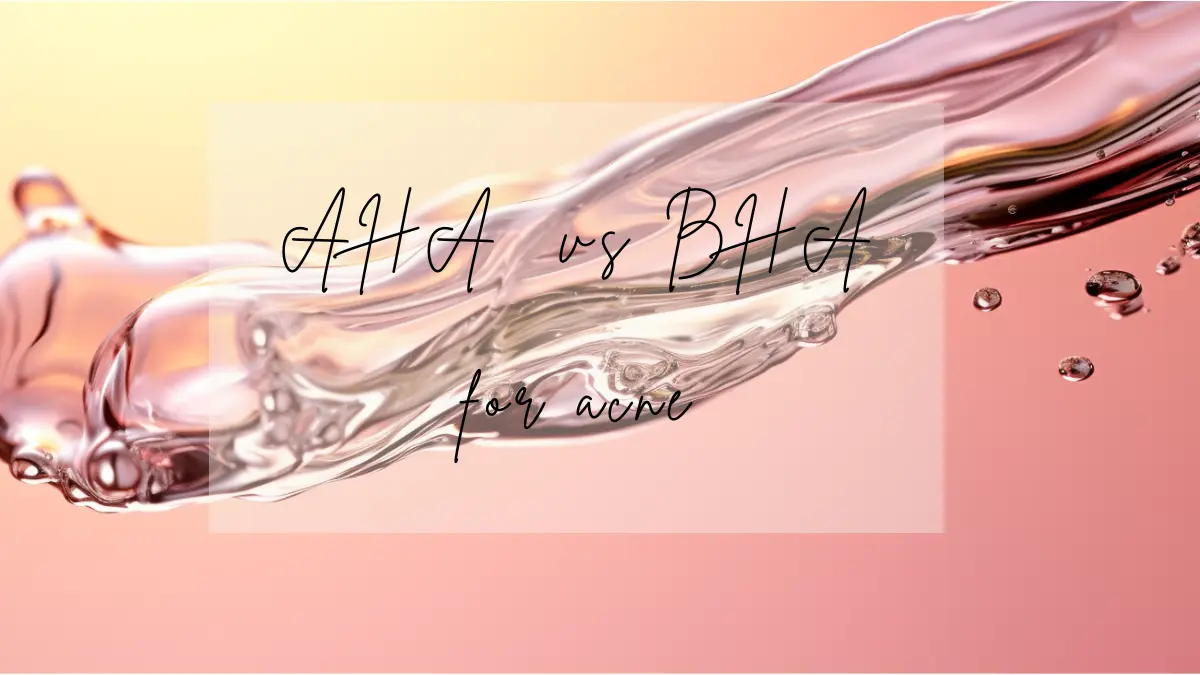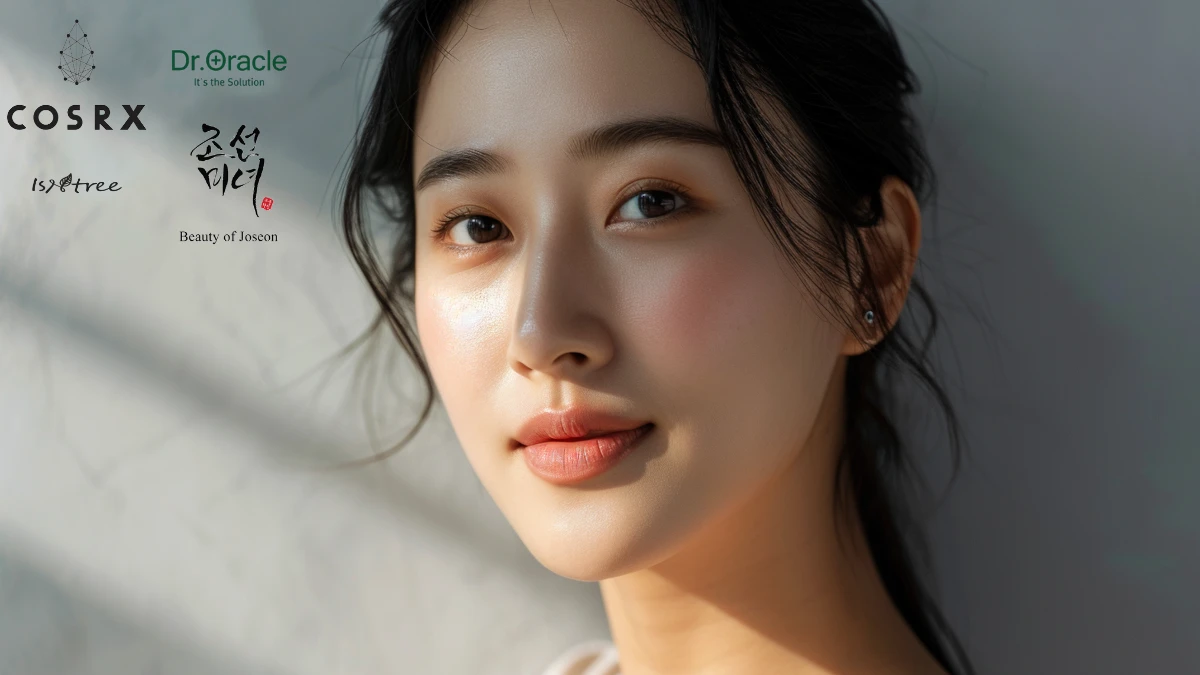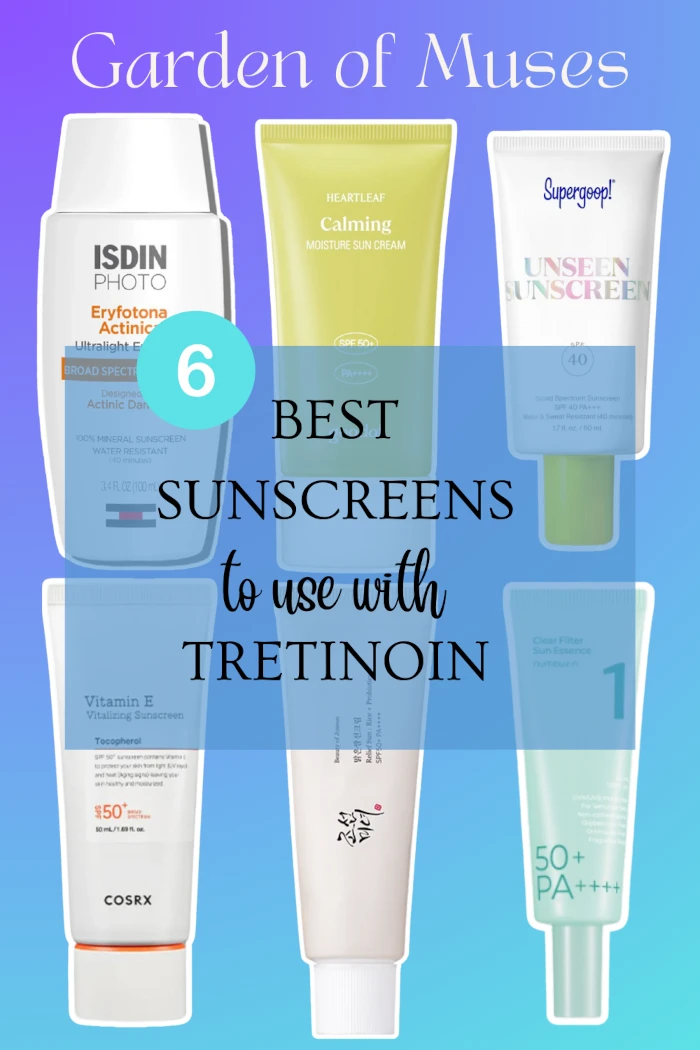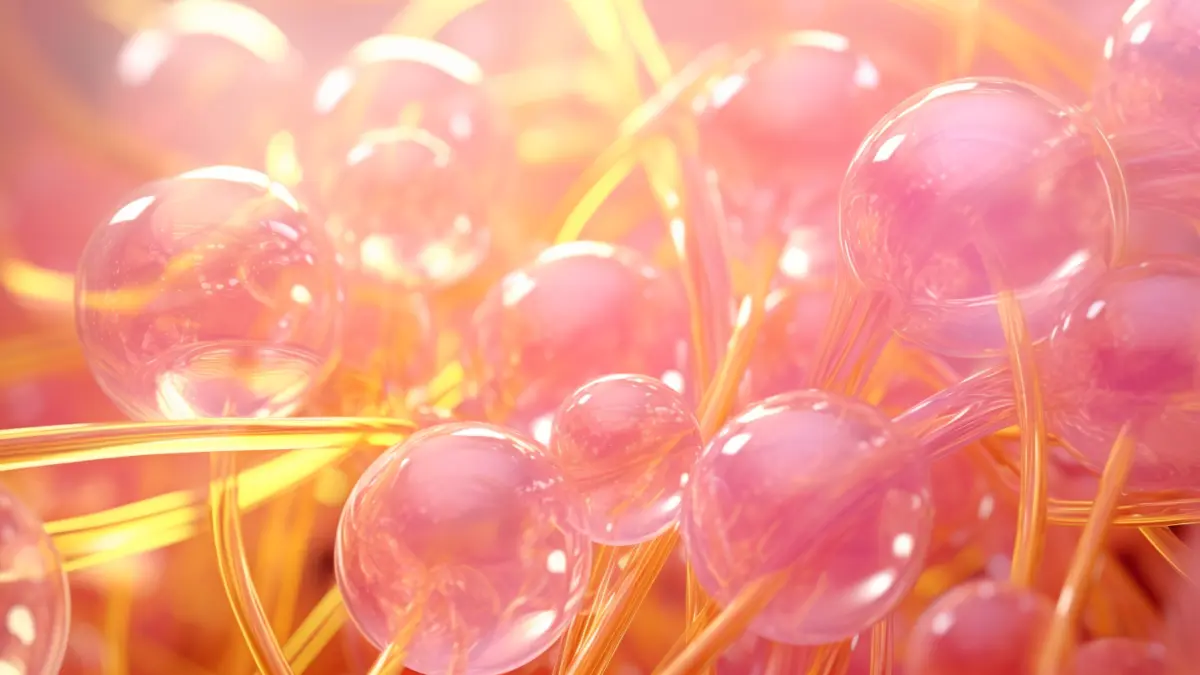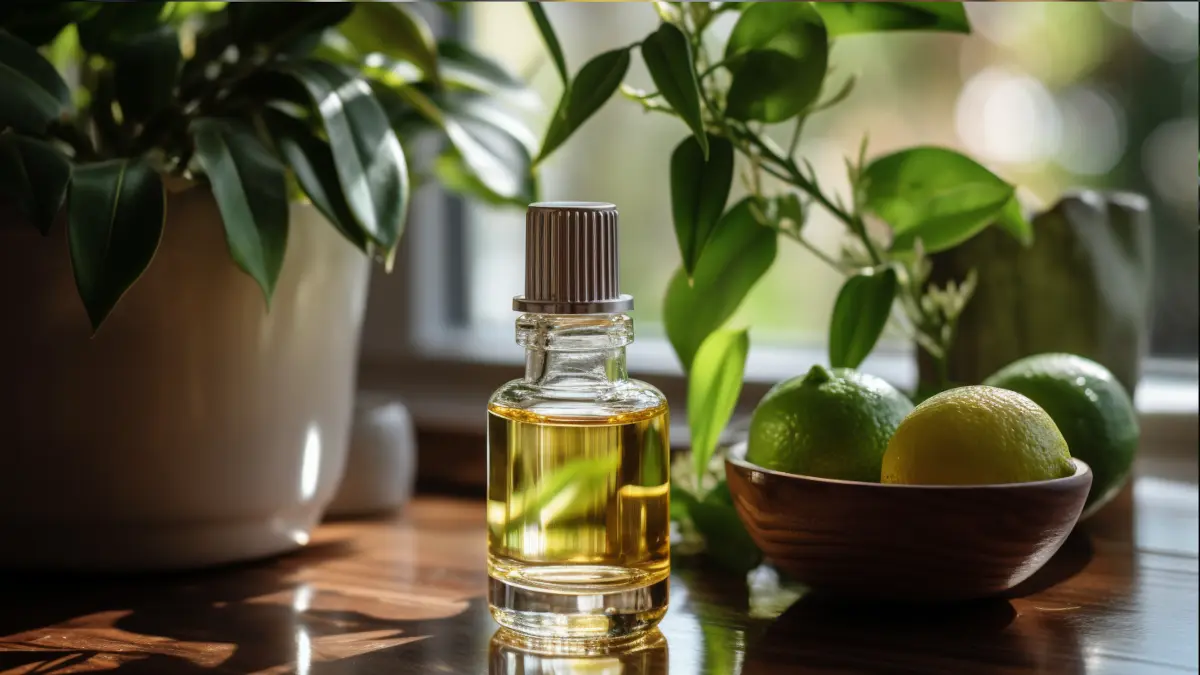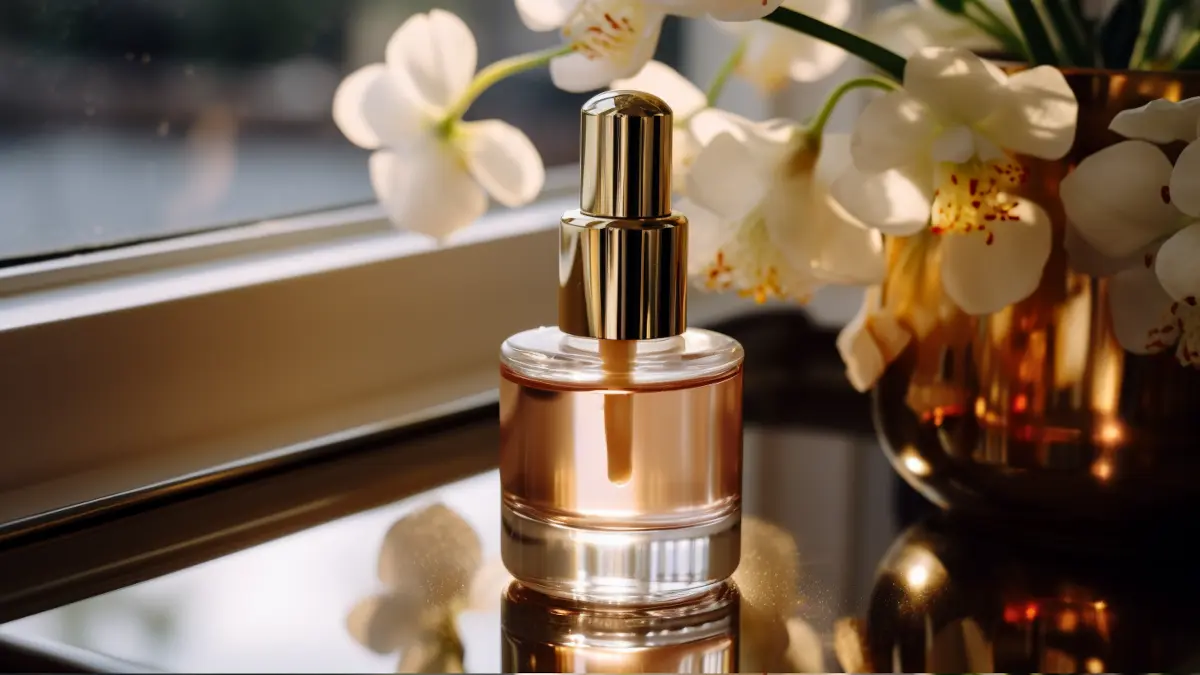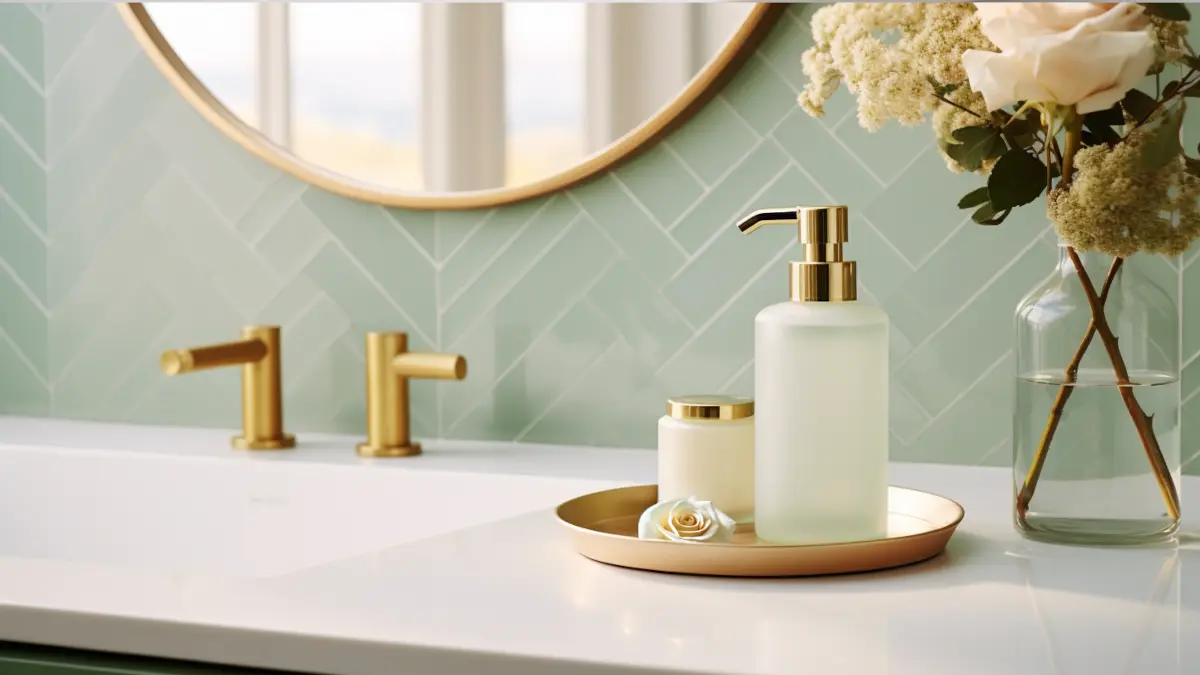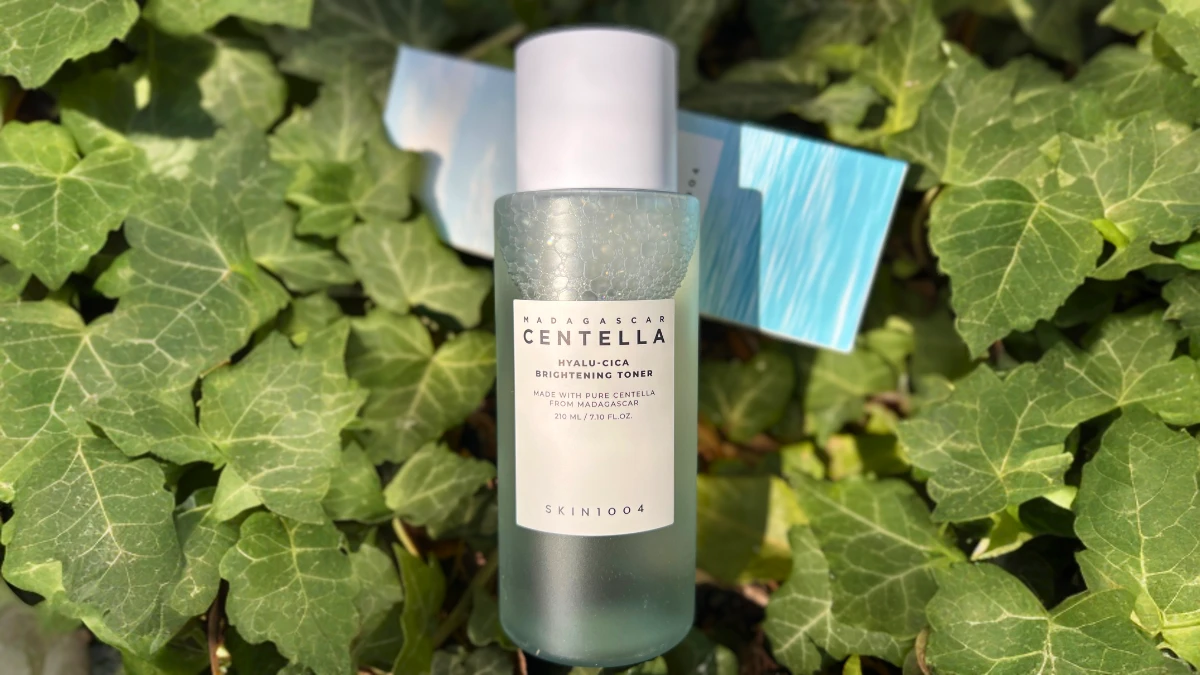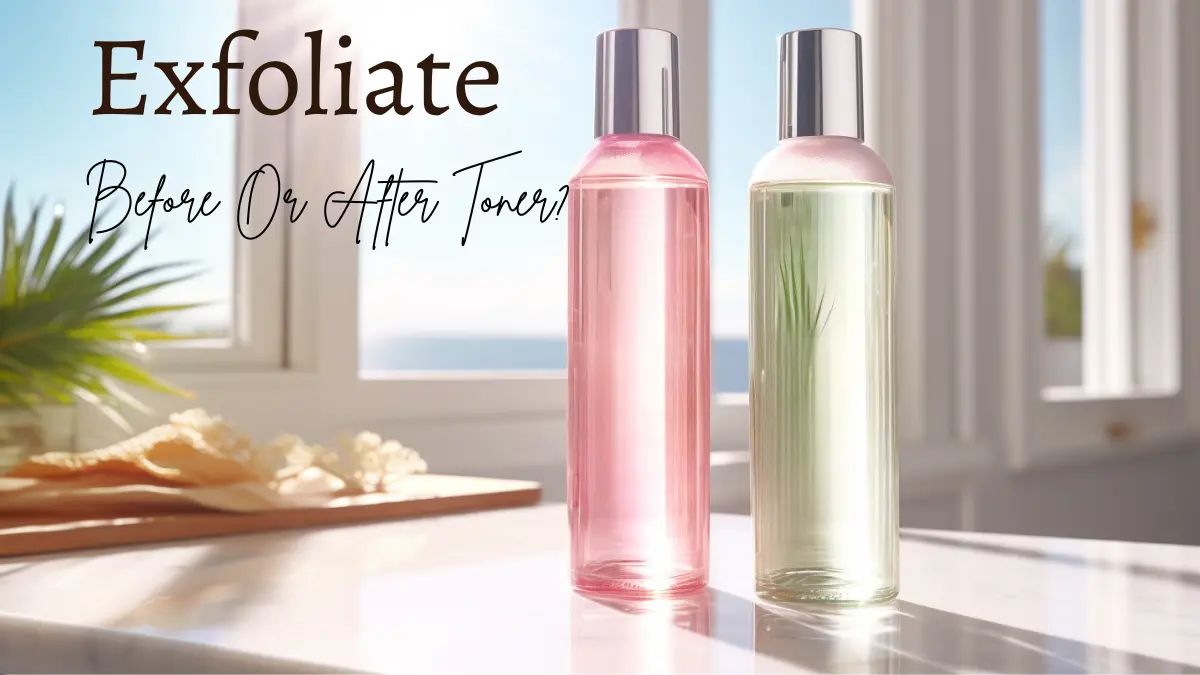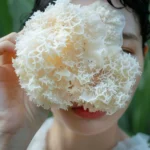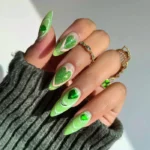A popular step in the Korean skincare routine is using products containing the chemical exfoliants AHA and BHA. Both these ingredients have fantastic benefits for our skin, but which one is better in helping to clear acne?
In short, both AHA and BHA are effective at combating acne, although they do so in slightly different ways. Neither is better than the other regarding acne. AHAs are better at treating inflammatory acne, while BHA is better at preventing pores from clogging and forming blackheads and non-inflammatory acne.
Which chemical exfoliant works best for your skin also depends on your skin type, with AHA being better suited for dry skin and BHA being better suited for oily skin. However, no matter your skin type, you can still benefit from AHA and BHA by following a few simple skincare tips I discuss in this post.
AHA vs. BHA for Acne:
- Understanding Chemical Exfoliants
- How AHA and BHA Are Similar
- AHA and BHA Differences
- Types of AHA
- Types of BHA
- Does AHA Help with Acne?
- Additional Benefits of AHA
- Does BHA Help with Acne?
- Do Korean Skincare Products Contain Salicylic Acid?
- What Is Betaine Salicylate?
- What Is Willow Bark Extract?
- Can BHA Cause Breakouts?
- Additional Benefits of BHA
- Can You Use AHA and BHA at the Same Time?
- Conclusion
Understanding Chemical Exfoliants
Before determining whether AHAs or BHAs are better for treating acne, I must explain these ingredients and how they work on your skin.
AHAs (alpha hydroxy acids) and BHAs (beta hydroxy acids) are both forms of chemical exfoliants. We all know that we need to exfoliate our skin occasionally to remove dead skin cells and unclog pores. Still, Western skincare often calls on physical exfoliants. I’m looking at you – apricot scrub. Scrubs can be too harsh and abrasive for the skin, especially if you have acne.
Chemical exfoliants are gentler on the skin and are non-abrasive. However, too much of a good thing can also be bad for your skin. They are suitable for acne-prone skin; as you’ll see, both work well to minimize acne and scarring.
AHA and BHA exfoliants are typically leave-on, and they make a big difference in the appearance of your skin. Besides having acne-fighting properties, AHAs and BHAs also minimize the appearance of wrinkles, unclog pores, smooth, rough, bumpy skin, even out skin tone, and increase skin hydration.
A Guide to Choosing the Best Water-Based and Low PH Cleanser with Product Recommendations
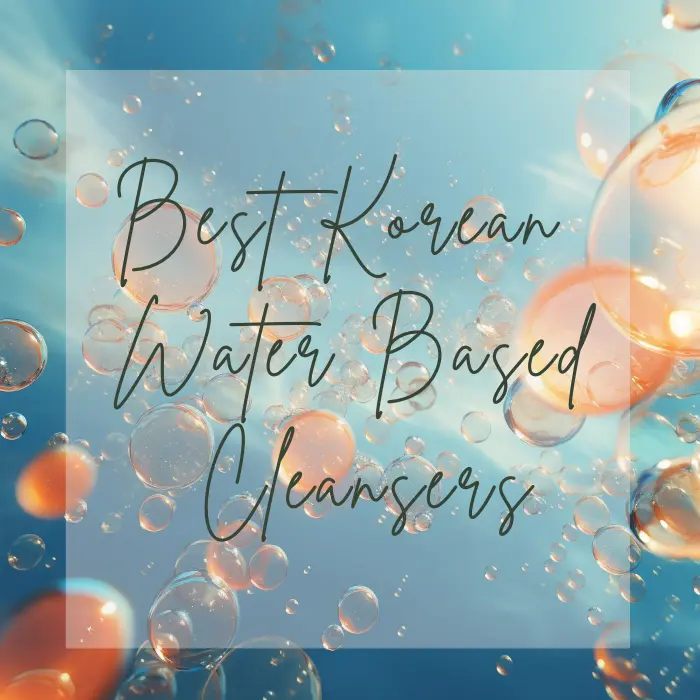
How AHA and BHA Are Similar
As I’ve already mentioned, both AHA and BHA are chemical exfoliants used to help the skin gently exfoliate its build-up of dead skin. Both AHAs and BHAs are naturally found in many plants.
AHA and BHA are similar in that they both act to unglue the bonds between the dead skin cells on the outer layer of the skin. This allows the skin to naturally ‘shed’ dead cells, revealing new, healthier cells to the surface.
Our skin naturally exfoliates dead skin cells, also called skin turnover. However, over time, as we age, this process slows down. Both AHA and BHA speed up the cell turnover rate, improving the appearance of our skin.
This ability of AHA and BHA to remove old skin faster makes them great ingredients for fading hyperpigmentation, too.
Best Korean Skincare for Hyperpigmentation in 2023

AHA and BHA Differences
Chemically, AHA and BHA are very similar but differ in size. Salicylic acid (BHA) is a much larger molecule than most AHAs. The main difference between AHA and BHA is that AHA is water soluble, and BHA is oil soluble.
This means that AHA can only work on the skin’s surface, while BHA can penetrate deep inside the pore, effectively unclogging the gunk of dead skin cells, sebum, and bacteria that can lead to acne.
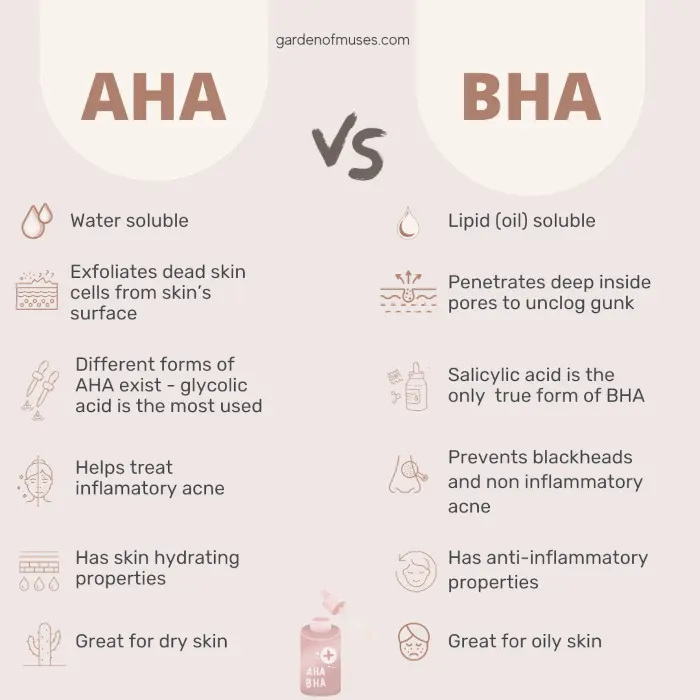
Types of AHA
The most common AHA used in skincare is glycolic acid, mainly derived from sugar cane, although it can be derived from other plants high in sugar.
Other forms of AHA used in skincare products are:
- Lactic acid – derived from milk;
- Citric acid – derived from citrus fruits;
- Malic acid – derived from apples and pears;
- Tartaric acid – derived from grapes;
- Mandelic acid – derived from bitter almonds.

Types of BHA
There is only one form of BHA: salicylic acid. BHA is a naturally occurring hormone plants produce as an environmental or pathogenic stress defense mechanism. It is mainly synthesized from willow bark.
Although citric acid is primarily classified as an AHA, it can sometimes also be considered a BHA, depending on its formulation.
Should you exfoliate before or after toner?
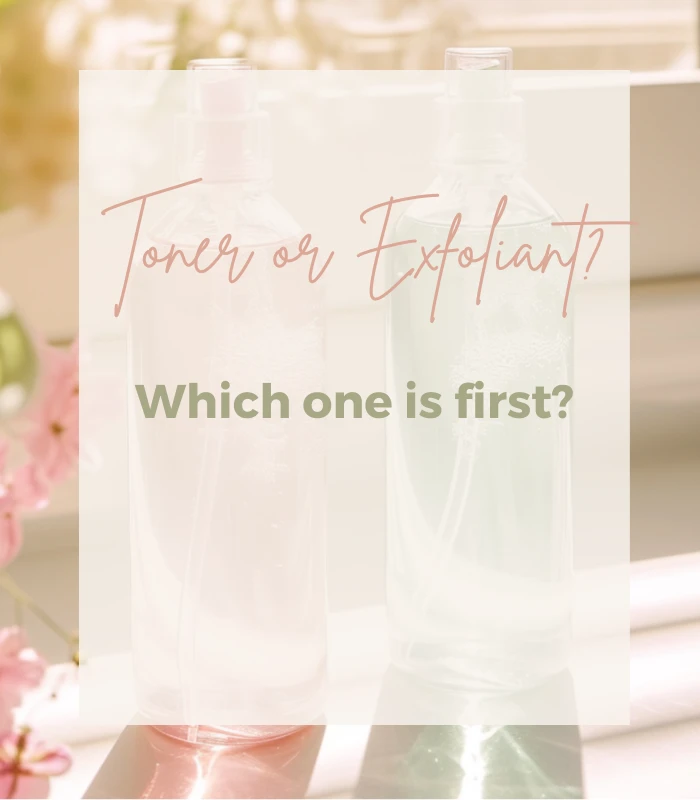
Does AHA Help with Acne?
Although conventional skincare advice is that BHA works better for acne, AHA can help improve acne, too, because it also helps to exfoliate dead skin cells from the skin’s surface, preventing pores from clogging.
Although AHA can’t penetrate deep inside the pores, its small molecular size and water-loving properties make it good at getting in between the layers and layers of dead skin cells on the surface of our skin.
Because AHAs exfoliate dead skin cells at the skin’s surface, they are more beneficial if you have inflammatory acne – since inflamed comedones are located at the skin’s surface.
Glycolic acid has the smallest molecular size and is the most effective and well-researched form of AHA. Significant research shows its effectiveness in treating inflammatory acne.
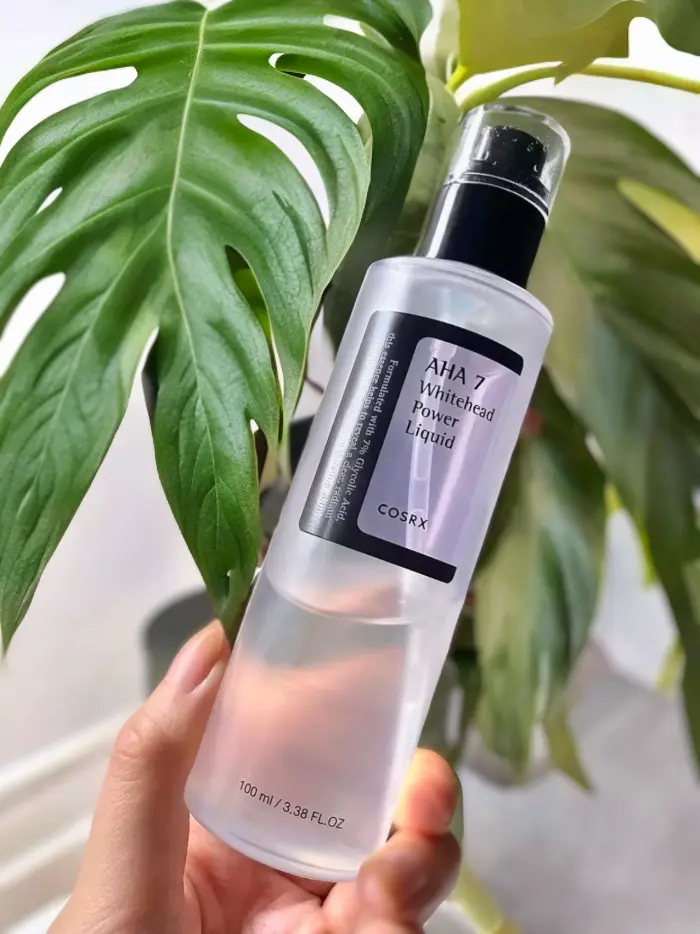
COSRX AHA 7 Whitehead Power Liquid is my favorite Korean skincare product with glycolic acid. This exfoliant also contains apple water (natural AHA), niacinamide, panthenol, and sodium hyaluronate. This chemical exfoliant doesn’t have any fragrance.
COSRX AHA Whitehead Power Liquid Ingredients List (last checked 2025)
Pyrus Malus (Apple) Fruit Water, Butylene Glycol, Glycolic Acid, Niacinamide, Sodium Hydroxide, 1,2-Hexanediol, Panthenol, Sodium Hyaluronate, Xanthan Gum, Ethyl Hexanediol.
Ingredients are referred from the COSRX official website.
Active Humectant/Moisturizing Herbs
Other AHAs, such as mandelic acid, have a much larger molecular size and, therefore, aren’t as effective at getting in between the layers of dead skin as glycolic acid can. However, they are much gentler on the skin and may be a good option for people with sensitive skin or rosacea.
Products containing 5-10% mandelic acid are safe and effective in treating acne.
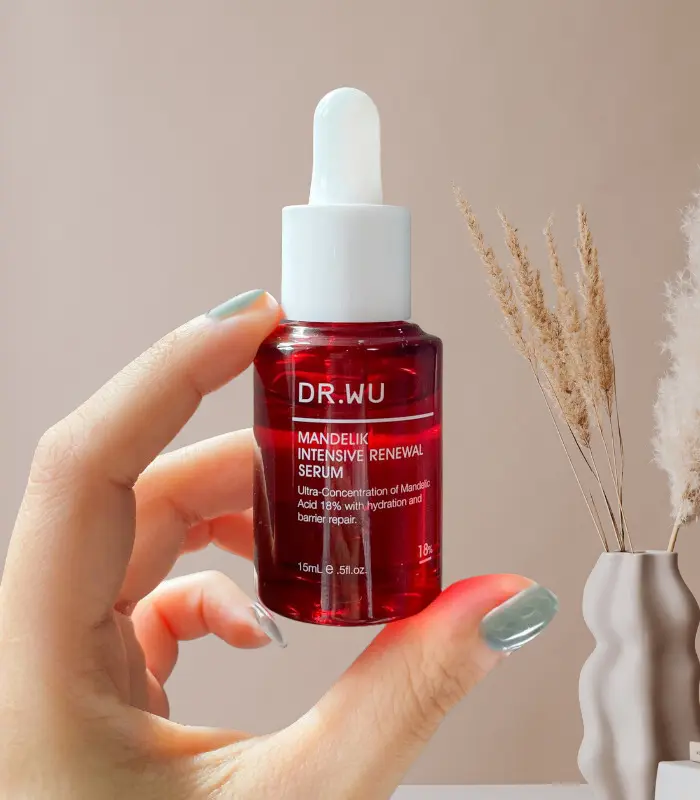
If you’re after a skincare serum containing mandelic acid, I recommend the DR. WU Mandelik Intensive Renewal Serum from the Taiwanese brand Dr. Wu. This serum works well at healing inflamed blemishes due to the 18% mandelic acid it contains (beta-glucan, panthenol, Centella Asiatica, and sodium hyaluronate).
Please read Mia’s in-depth review of the DR. WU Mandelik Intensive Renewal Serum.
Dr. Wu Intensive Renewal Serum With Mandelic Acid 18% Ingredients List (last checked 2025)
Aqua, Propylene Glycol, Mandelic Acid, Butylene Glycol, Triethanolamine, Beta-Glucan, Ruscus Aculeatus Root Extract, Panthenol, Centella Asiatica Extract, Sodium Hyaluronate, Hydrolyzed Yeast Protein, Disodium EDTA, Dipotassium Glycyrrhizate, Calendula Officinalis Flower Extract, Allantoin, Ammonium Glycyrrhizate, Aesculus Hippocastanum Extract.
Ingredients referred from INCIDecoder.
Humectant/Moisturizing Active Herbs Brightening
Additional Benefits of AHA
Besides helping to improve acne, AHAs have a wide range of other skin benefits. The exfoliating properties of AHA also mean that this is an excellent ingredient for improving acne scars and fading hyperpigmentation, as exfoliation removes pigmented skin and reveals a healthier layer of skin underneath.
Garden of Muses has an extensive guide on how to fade hyperpigmentation. Still, if you don’t have time to read everything right now, I will mention that fading hyperpigmentation requires lots of patience and persistence as it takes some time to peel away dark marks slowly.
Since they are water-loving molecules, AHAs improve the skin’s moisture content. This means they are generally preferred for people with normal to dry or sun-damaged skin. Oily skin types can still benefit from using products containing AHA.
The Ultimate Guide on Humectants in Skincare
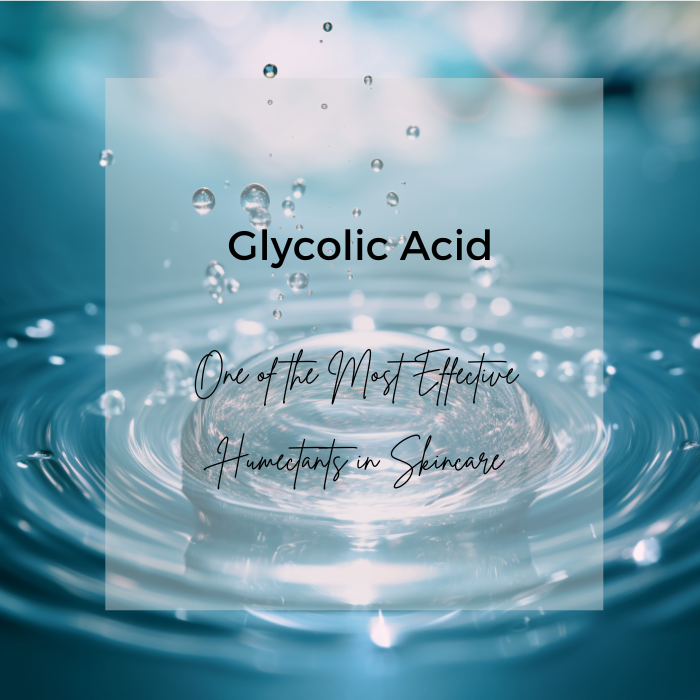
AHA is also a great anti-aging ingredient as it effectively decreases fine lines and wrinkles due to its ability to stimulate collagen production and exfoliate and resurface the skin.
Does BHA Help with Acne?
While AHA decreases inflammatory acne on the skin’s surface, BHA works well at clearing blackheads and preventing acne caused by clogged pores.
Remember, I mentioned that BHA is oil-soluble? Well, acne is often caused by oil (sebum), dead skin cells, and other gunk, such as dirt, makeup, and other skincare products, clogged in our pores – leading to the perfect breeding ground for acne-causing bacteria.
AHA molecules are water-soluble and can’t penetrate the pores to clear this oily acne-causing mess, whereas BHA can.
Salicylic acid is considered the only true form of BHA, and much research shows its effectiveness in treating acne.
This scientific review of four clinical studies showed that salicylic acid pads (with salicylic acid concentrations of 0.5 to 2%) effectively reduced the number and severity of acne lesions.
This study showed that salicylic acid (2% solution) was as effective as a 5% benzoyl peroxide solution in treating mild to moderate acne (including papules/pustules and non-inflammatory lesions).
This showed the molecular pathway by which salicylic acid unclogs pores and reduces lipid production. The researchers also found that salicylic acid has strong anti-inflammatory properties in addition to decreasing oil production in pores.
Salicylic acid has been proven to reduce oil production, unclog pores, and have anti-inflammatory properties.
Related Story
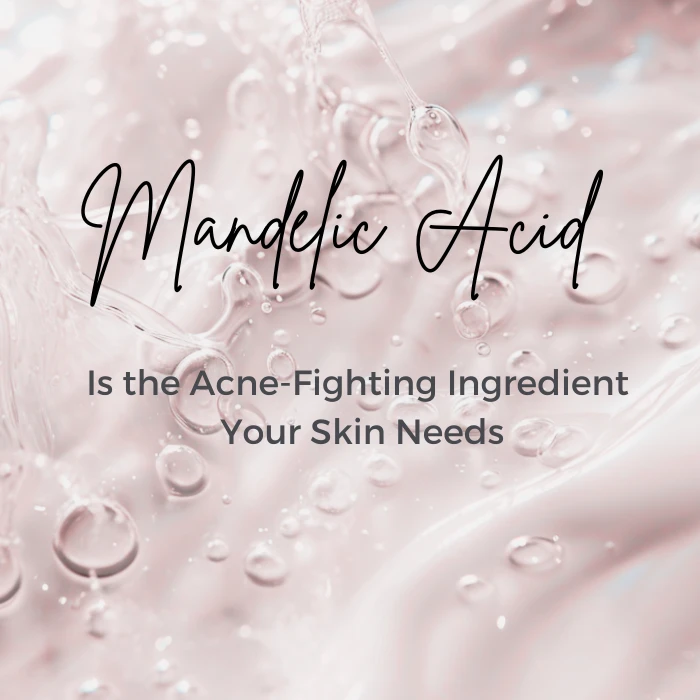
Do Korean Skincare Products Contain Salicylic Acid?
Studies have shown that salicylic acid concentrations as low as 2% effectively treat mild to moderate acne. Salicylic acid seems a common ingredient in Western skincare products, but did you know its use is restricted in Korea?
This means that Korean BHA skincare products either contain low concentrations of salicylic acid (below 0.5%) or use other ingredients in their place, such as betaine salicylate and willow bark extract.
Of course, these two ingredients aren’t BHAs, chemically speaking, so it’s confusing, and perhaps a little misleading, to have products labeled as containing BHA or salicylic acid.
Acne-Prone? Here are The Best COSRX Products for Oily, Acne-Prone Skin
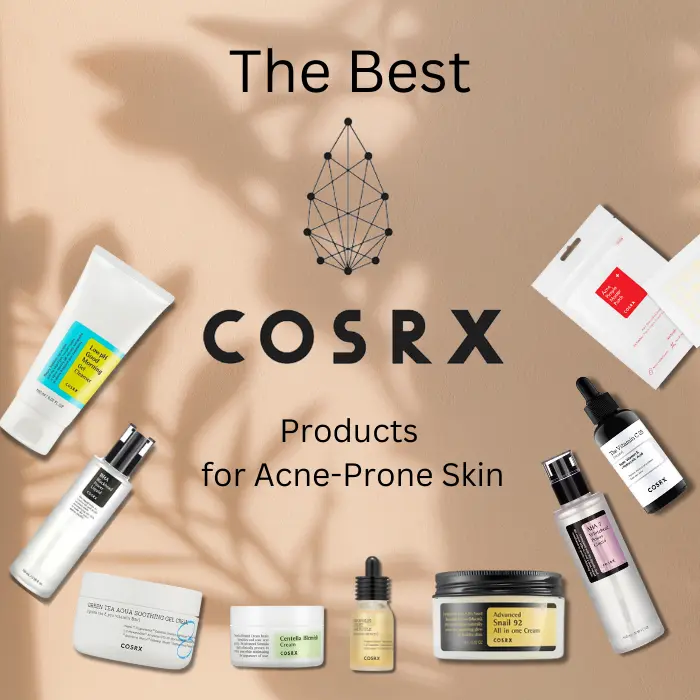
What Is Betaine Salicylate?
Betaine salicylate is a derivative of salicylic acid. Its molecular structure resembles salicylic acid with a betaine group attached. It’s derived from sugar beets and is commonly used as an alternative to salicylic acid in Korean skincare products.
The benefits of betaine salicylate are promising, and it appears to be a very effective exfoliant and acne-preventing ingredient. It’s also less irritating and less drying than salicylic acid due to the betaine group it contains.
Skincare products need 4% betaine salicylate concentration to be as effective as those containing 2% salicylic acid.
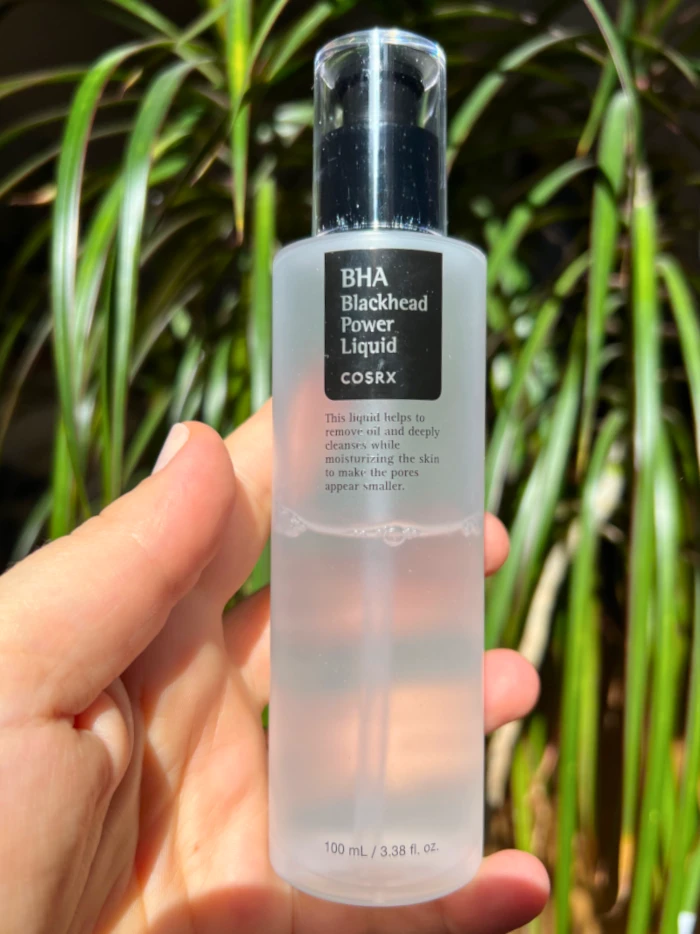
The Korean BHA I’m using and have seen excellent results with is the COSRX BHA Blackhead Power Liquid. It’s the most popular Korean BHA skincare product, containing 4% betaine salicylate and willow bark extract.
It seeps into the skin to clear away deep, stubborn impurities. With niacinamide, it brightens skin and lessens the look of fine lines.
I love how minimal the COSRX ingredient lists are! But I digress. Let’s keep going.
COSRX BHA Blackhead Power Liquid Ingredients List (last checked 2025)
Salix Alba (Willow) Bark Water, Butylene Glycol, Betaine, Niacinamide, Betaine Salicylate, 1,2-Hexanediol, Sodium Hydroxide, Sodium Hyaluronate, Panthenol, Xanthan Gum, Ethyl Hexanediol.
Ingredients referred from the COSRX’s official website.
Active Humectant/Moisturizing
What Is Willow Bark Extract?
You may have previously noticed Korean skincare products containing willow bark extract or water. But what is this ingredient?
As mentioned above, salicylic acid is most commonly derived from willow bark. This is because willow bark contains the chemical salicin, which converts into salicylic acid in the presence of certain enzymes.
However, our skin doesn’t contain these enzymes. This means the salicin in willow bark extract or water cannot be converted to salicylic acid on our skin.
So why do many Korean skincare products contain willow bark, including my beloved COSRX BHA Blackhead Power Liquid? Since we associate willow bark with BHA, the answer is partly marketing. Still, it also has soothing and anti-inflammatory effects on the skin, making it an excellent ingredient for fighting acne.
Can BHA Cause Breakouts?
Since this article is about how BHA is an effective ingredient for fighting acne, I’d like to address a commonly asked question – can BHA cause you to break out?
The answer is yes. When used too often or in high concentrations, BHA can cause skin irritation and drying, leading to more acne. To have clearer skin, looking after your skin’s moisture barrier is essential to prevent excess sebum production and reduce inflammation.
I only use my COSRX BHA Blackhead Power Liquid twice weekly as part of my evening routine. I found that using it more than this did irritate my skin a little, leading to more pimples.
Of course, how often you use BHA in your skincare routine depends on your skin and what type of product you are using. Always follow the product directions. If you haven’t used products containing BHA before, I would recommend introducing the product slowly. Perhaps apply it only weekly in the beginning, and if your skin is tolerating it well, increase the frequency with which you use the product from there.
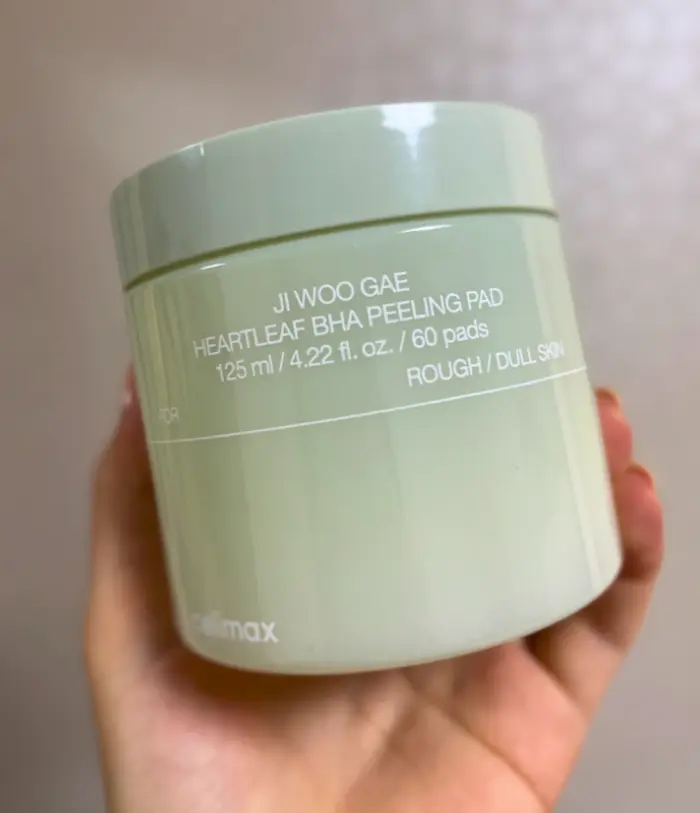
My newest BHA addition is the Celimax JiWooGae Heartleaf BHA Blemish Toner Pads. They work quickly without irritation.
Additional Benefits of BHA
I’ve already briefly mentioned some of the additional benefits of BHA for the skin, including its anti-inflammatory properties, helping to soothe the skin and reduce irritation.
Even if you don’t have acne, BHA helps regulate sebum production within the pores of your skin, which is why it is highly recommended for oily skin types. Ensure you don’t overdo it, as this can dry out your skin, increasing oil production and skin irritation.
How to Get Rid of Post-Inflammatory Hyperpigmentation – AKA Acne Marks
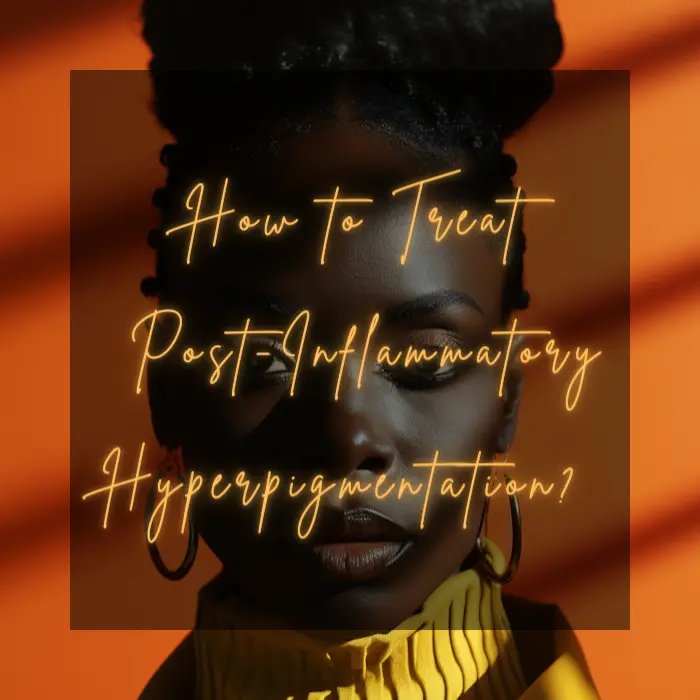
Like AHAs, BHA is also a great ingredient to include in your skincare routine if you want to fade hyperpigmentation. Studies have shown the effectiveness of salicylic acid against post-inflammatory hyperpigmentation and melasma for various ethnic groups.
Some of the studies I linked to above also found that BHA has anti-aging benefits, with results showing improvements in photo-aging and fine lines and wrinkles. The mechanism by which BHA can improve signs of aging is not yet adequately understood, and more studies are needed in this area.
Can You Use AHA and BHA at the Same Time?
You don’t have to use an AHA and a BHA to get the best results. You will get remarkable results using either on their own. AHA and BHA work great at exfoliating the skin and preventing acne, but they work in slightly different ways.
However, it is possible to include both an AHA and BHA in your skincare routine if your skin requires more thorough exfoliation to address more advanced signs of aging, hyperpigmentation, and stubborn clogged pores by alternating their use.
How you alternate your AHA and BHA products depends on how well your skin tolerates chemical exfoliation and on the strength of the products.
For example, your skin might only tolerate using a chemical exfoliant once or twice weekly. If your skin handles chemical exfoliation well (you can work up to this), you could alternate using an AHA or BHA every evening.
It may take some time to determine what frequency and combination of exfoliation works best for your skin. The critical thing to remember is to start small and work your way up from there if your skin is tolerating the products you’re using well.
Conclusion
AHAs and BHAs are chemical exfoliants that have become hugely popular in Korean skincare and are much preferred over physical exfoliants as these can damage the skin.
There are a handful of different forms of AHA available. However, only one form of BHA exists salicylic acid. The use of salicylic acid in skincare products is very restricted in Korea. Therefore, Korean skincare products often use betaine salicylate, a derivative of salicylic acid, or willow bark extract/water in its place.
AHA and BHA work in slightly different ways – with AHA breaking apart dead skin cells on the skin’s surface and BHA penetrating deep into the pores to unclog them.
As it turns out, both AHA and BHA have properties that make them beneficial for acne-prone skin. Neither is better than the other regarding helping acne, although AHA may be better at treating inflammatory acne at the skin’s surface. At the same time, BHA is better at preventing pores from becoming clogged and forming blackheads and non-inflammatory acne.
Show Me Proof
- Sharad, Jaishree. “Glycolic acid peel therapy–a current review.” Clinical, cosmetic and investigational dermatology (2013): 281-288.
- Dębowska, Renata M., Aleksandra Kaszuba, Iwona Michalak, Agata Dzwigałowska, Czanita Cieścińska, Elżbieta Jakimiuk, Joanna Zielińska, and Andrzej Kaszuba. “Evaluation of the efficacy and tolerability of mandelic acid-containing cosmetic formulations for acne skin care.” Dermatology Review/Przegląd Dermatologiczny 102, no. 4 (2015): 316-321.
- Zander, Ernst, and S. Weisman. “Treatment of acne vulgaris with salicylic acid pads.” Clinical therapeutics 14, no. 2 (1992): 247-253.
- Zheng, Yue, Songchao Yin, Yue Xia, Jian Chen, Congxiu Ye, Quanrong Zeng, and Wei Lai. “Efficacy and safety of 2% supramolecular salicylic acid compared with 5% benzoyl peroxide/0.1% adapalene in the acne treatment: A randomized, split-face, open-label, single-center study.” Cutaneous and ocular toxicology 38, no. 1 (2019): 48-54.
- Lu, Jin, Tianxin Cong, Xiang Wen, Xiaoxue Li, Dan Du, Gu He, and Xian Jiang. “Salicylic acid treats acne vulgaris by suppressing AMPK/SREBP 1 pathway in sebocytes.” Experimental dermatology 28, no. 7 (2019): 786-794.
- Kligman, Douglas, and Albert M. Kligman. “Salicylic acid peels for the treatment of photoaging.” Dermatologic surgery 24, no. 3 (1998): 325-328.
- Ahn, Hyo Hyun, and IL‐HWAN KIM. “Whitening effect of salicylic acid peels in Asian patients.” Dermatologic surgery 32, no. 3 (2006): 372-375.
- Amer Ejaz, Naeem Raza, Nadia Iftikhar, and Fawad Muzzafar. “Comparison of 30% salicylic acid with Jessner’s solution for superficial chemical peeling in epidermal melasma.” Journal of the College of Physicians and Surgeons Pakistan 18, no. 4 (2008): 205-208.
- Grimes, Pearl E. “The safety and efficacy of salicylic acid chemical peels in darker racial‐ethnic groups.” Dermatologic surgery 25, no. 1 (1999): 18-22.
